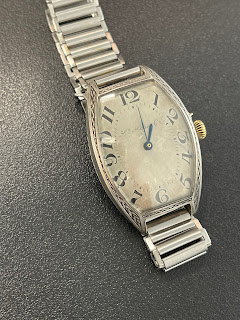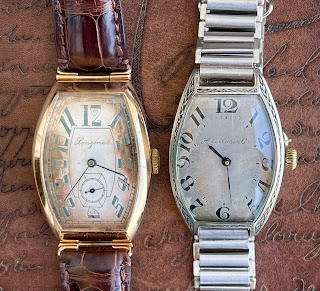For those of you who know, I have been obssessed with Vacheron Constantin watches lately. Recently, I have been attracted by the Vacheron Constantin Overses series. A direct descendant of the 222, this was the intermediary step between 222 and the calatrava cross-inspired case that many know today.
In particular, I am attracted by the first generation VC Overseas. The Vacheron Constantin Overseas 42040 is a classic and sought-after sports watch from the renowned Swiss manufacture. The Overseas 42040 was introduced in 1996 as a more contemporary interpretation of Vacheron Constantin's earlier 222 model, which debuted in 1977. It features the brand's signature integrated bracelet design and octagonal notched bezel, giving it a distinctive and sporty look.
For the 3 hands Time-only, first generations Overseas can be split two ways. There are two case size and two generations of movements. References that end in 0 : 42020 & 42050 have the Girard-Perregaux 3100 ébauche that was still COSC certified. The references that end in 2 : 42042 & 42052 have a movement 1311 VC revised to be slightly more durable but shares the same architecture.
References 42040 & 42042 are this ‘jumbo’ 37mm case, references that end in 42050 or 42052 are the midsized 35mm. Within those references, there is a wealth of variation including guilloché dials, three LHD cases, non-luminous iterations, Arabic dials, or rarer dials such as tropical examples or this salmon. That’s not even to mention Geneve vs Genève dials, or sigma, Swiss, and T Swiss signatures. There’s an almost infinite degree of variation to early Overseas, which makes collecting and learning a rewarding challenge.
A simple white guilloché 42040 just broke to around 10K USD for the first time in awhile recently, which is the value buy of the century. The rarer dials will still command 20-30K. Gold is low production enough to have remained quite valuabe, always near 40K. But just three years ago, prices for all of these were nearly double. It is one of very few categories that feels almost unsustainably undervalued for how objectively well-made and finished these cases and dials are. Look at tritium Royal Oak or Nautilus, even the midsized are more valuable. Perhaps this design is just too polarizing; of all 90s holy trinity cases, the Overseas probably has the most aggressive character. The case has broad shoulders. Its bezel is harsh and serrated. The bracelet taper is minimal.
The prices of these varies. A solid gold white dial costs about HK$160000-180000. However, a stainless steel with salmon costs almost the same. The difficult question is which one should one get?
Summary of the Vacheron Overseas Series notes extracted from Internet are as follows:
The first generation VC 42040 was marketed from 1996 to 2004. Measuring 37mm in diameter, this first generation piece is powered by the COSC-certified VC1310 caliber. The watch has a crwon giard and has a sqaure bracelet link plus The Maltese cross 8 notches Octagonal bezel.
The second generation VC was introduced in 2004 and retired from the catalog in 2016. It was launched, with a more modern design, notably with its metal bracelet featuring a half Maltese cross motif and optimized for greater comfort. Its integration to the case was reworked and its center link was extended up to the bezel. The crown guard disappeared and new, patterned dials completed the overall sportier feel. Muscled up at 42mm, the Overseas 2 was relying on the VC1126 (JLC889-based) and the VC1137 (FP1185 with big date) while a soft iron antimagnetic screen gave the movement an all-around protection. The bracelet has the modern Maltese cross was redesigned to resemble its current look. The crown guard disappeared and the case was enlarged to 40/42MM. It retains the Maltese cross 8 notches Octagonal bezel.
This third generation VC In 2016, Vacheron Constantin presented a revamped Overseas collection with a more elegant and refined style while retaining its distinctive character. The overall design (by Vincent Kaufmann) is cleaner with more fluid lines. If the case takes more of a barrel shape, a disc below the bezel underlines its round, enlarged opening. The Maltese-cross bezel now has 6 notches versus 8 previously and spread out to the very rim of the case. The case back no longer features naval engravings but a sapphire crystal revealing mechanics worth a close look: 3 new in-house movements, new complications and the return of a horological classic, the VC1120. Really quite something all the more as all new models bear the Geneva Seal and are fitted with convenient interchangeable straps/bracelets. now proudly holds a factory caliber ref. VC5100 with the prestigious Poinçon Genève quality standard and a 22K gold oscillating weight. An ingenious new system now lets you change the strap to an alligator wristband or even a sportier rubber strap.
https://monochrome-watches.com/history-vacheron-constantin-overseas-1970s-icon/
https://www.41watch.com/en/blog/vacheron-constantin-overseas-an-historical-review-n137
https://www.watchtime.com/featured/overseas-mission-the-history-and-evolution-of-the-vacheron-constantin-overseas/
































